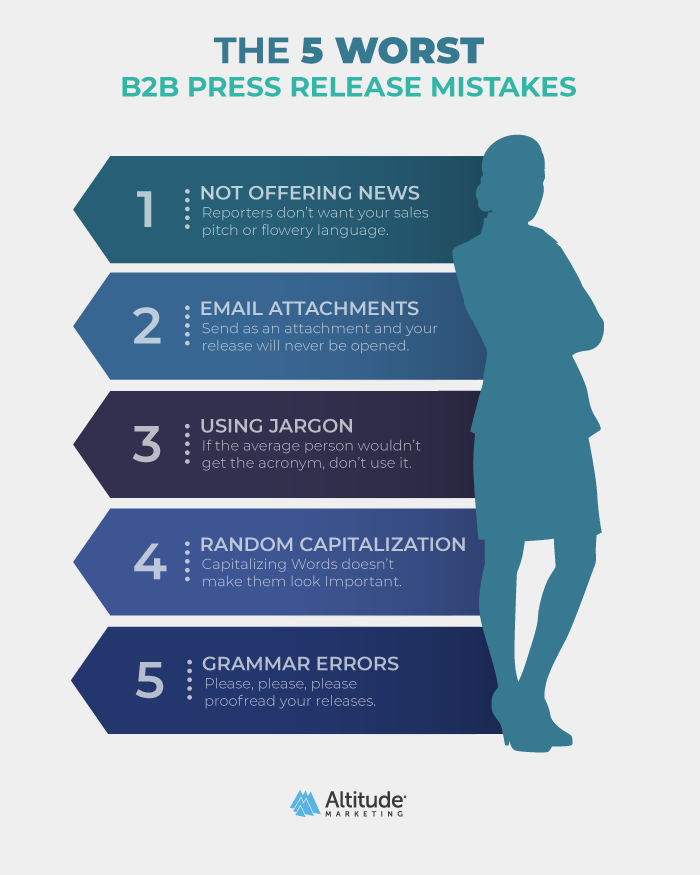When it comes to press releases and media pitches, the odds are against B2B marketers. Even if you have a good relationship, the odds are against an editor or journalist using your content.
There are more than six PR people for every reporter. That means editors and writers get bombarded with releases and pitches every day.
And that means your press release is one among many.
Making your content stand out isn’t easy. But we can guarantee you’ll end up in the recycle bin if you commit one of these B2B press release mistakes.
Commit any of these sins, and you’ll never be taken seriously by the editor or writer you’re pitching.

Mistake #1: Not Offering News
When you write a B2B press release, avoid flowery adjectives and adverbs in “non-quote” copy.
A press release should relay news – not advertising copy or promotional information.
- Remove all adjectives and adverbs from your headline and lead paragraph.
- Keep opinions and promotional language to quotes from the CEO or another stakeholder. Drop them from body copy.
- Avoid language like “We are proud to announce …” or “Acme Company welcomes …”. Those phrases are for internal communications, not press releases.
If you really need to promote something that isn’t hard news, a press release might not be the best format. Instead, consider using it for your blog, social media, newsletter or advertising.
Mistake #2: Sending a Release as an Email Attachment
This might be the worst B2B press release mistake.
If your language is too promotional, it still might get read by the recipient. Sending a press release as an email attachment all but guarantees it will never be seen.
Why?
Because nobody in their right mind downloads attachments from unknown sources. Most networks won’t even let them through.
So unless you want to ensure that 99.9% of recipients will never open your release, paste the copy into the email body.
Mistake #3: Using Jargon & Acronyms
Everybody knows what TGIF and FYI mean. But your industry’s acronyms likely aren’t as simple.
If the average person on the street doesn’t know what it means, don’t use it.
Even a trade journalist might get confused. And if they’re busy, they may or may not be bothered to figure it out.
Instead, spell out acronyms on first reference, and remove industry jargon altogether.
Mistake #4: Random Capitalization
Words are not Suddenly made More Important by random capitalization.
They just make it look like you failed high school English.
Stick to AP Style when writing press releases. This guides consistent capitalization for titles, geographic regions and other elements.
Never randomly capitalize things like “Life Sciences Industry” for emphasis. It’s jarring to the reader, and makes you look amateur.
Mistake #5: Punctuation & Spelling Errors
This B2B press release mistake might be worst than random capitalization.
Before you hit send, please take the time to give your release a good proofread. Try going through it from end to beginning. This helps avoid your brain “filling in” missing words automatically. Better yet, have someone else in your office read it for you. They’ll likely find mistakes you missed.
Don’t forget to double-check names, titles and details, too. Getting a reporter’s name wrong makes it more likely they’ll toss your release.



